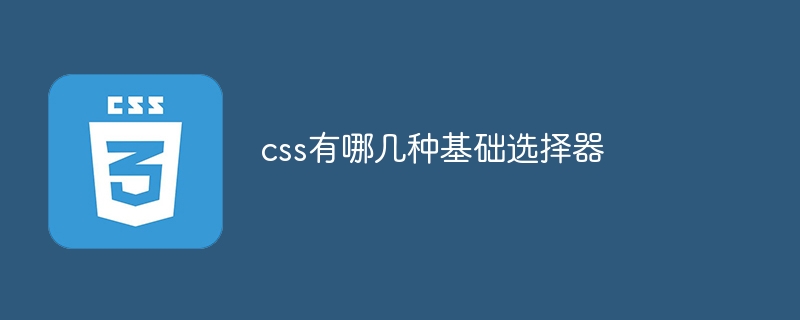Home >Web Front-end >CSS Tutorial >What are the basic selectors in css?
What are the basic selectors in css?
- 下次还敢Original
- 2024-04-25 13:27:16822browse
CSS selectors are used to select and manipulate HTML elements, including: Universal selectors: select all elements. Element selector: Selects the element with the specified element name. Class selector: selects elements with the specified class name. ID selector: Selects elements with a specified ID. Descendant selector: Selects descendant elements that belong to the specified ancestor element. Child element selector: Selects child elements that directly belong to the specified parent element. Adjacent sibling selector: Selects the sibling element immediately following the specified sibling element. Universal sibling selector: Selects all sibling elements adjacent to the specified element.

CSS Basic Selector
CSS selector is used to select and manipulate HTML elements in HTML documents. There are several different CSS selector types, each serving a specific purpose.
Universal Selector
-
*: Select all elements.
Element selector
-
element_name: Selects elements with the specified element name. For example,pselects all paragraph elements.
Class selector
-
.class_name: Selects elements with the specified class name. For example,.btnselects all elements with classbtn.
ID Selector
-
#id_name: Selects elements with the specified ID. For example,#headerselects the element with the IDheader.
Descendant selector
-
ancestor_element descendant_element: Selects descendant elements that belong to the specified ancestor element. For example,body .btnselects all elements that arebodyelements and have the classbtn.
Child element selector
- ##parent_element > child_element
: Selects child elements that directly belong to the specified parent element. For example,ul > liselects alllielements that are directly part of theulelement.
Adjacent sibling element selector
- ##previous_sibling_element next_sibling_element
- : Select the sibling element immediately following the specified sibling element . For example,
p h2selects theh2element immediately following thepelement.
- ~ sibling_element
- : Select all sibling elements adjacent to the specified element. For example,
p ~ h2selects allh2elements that are adjacent to apelement.
The above is the detailed content of What are the basic selectors in css?. For more information, please follow other related articles on the PHP Chinese website!

